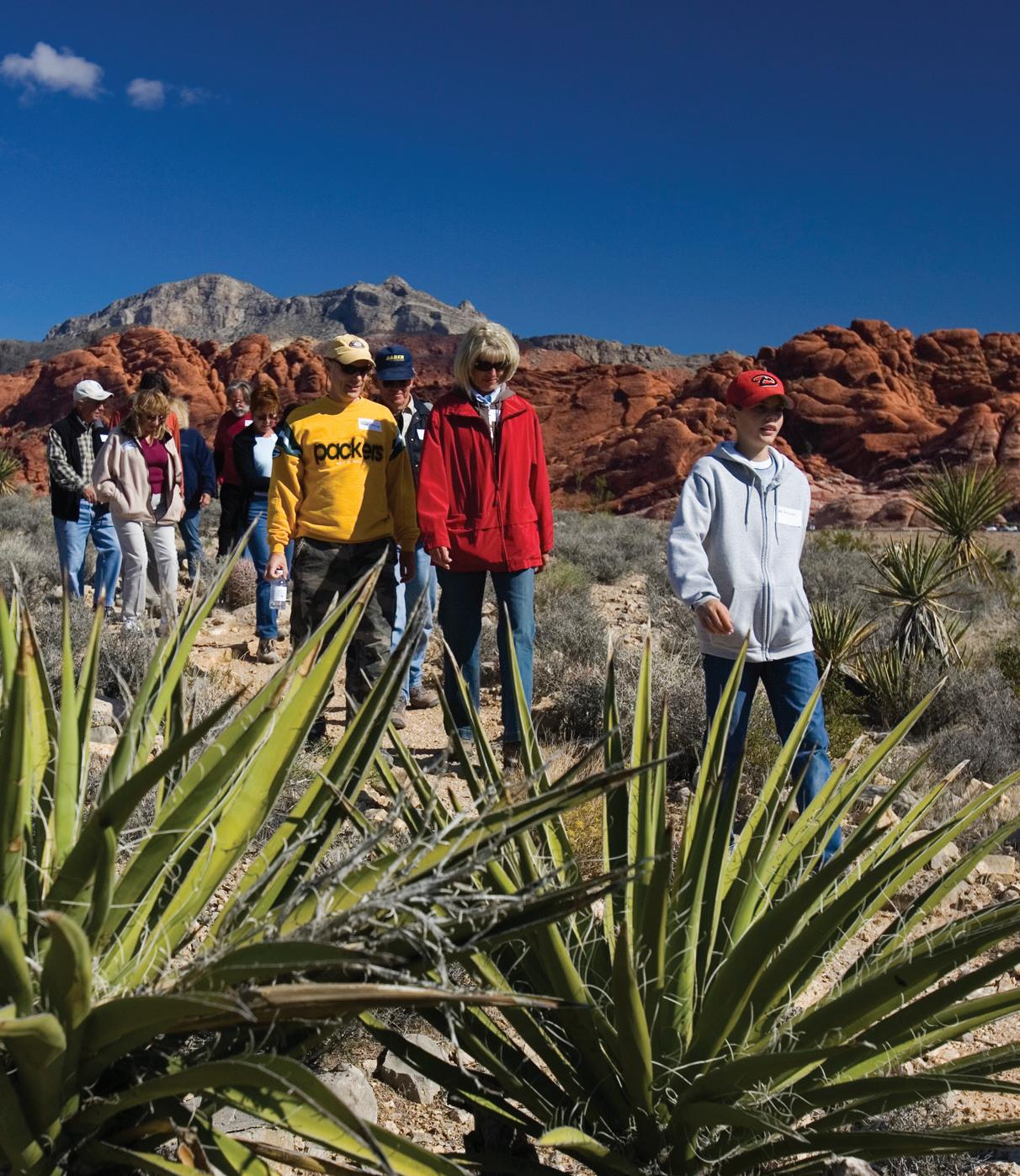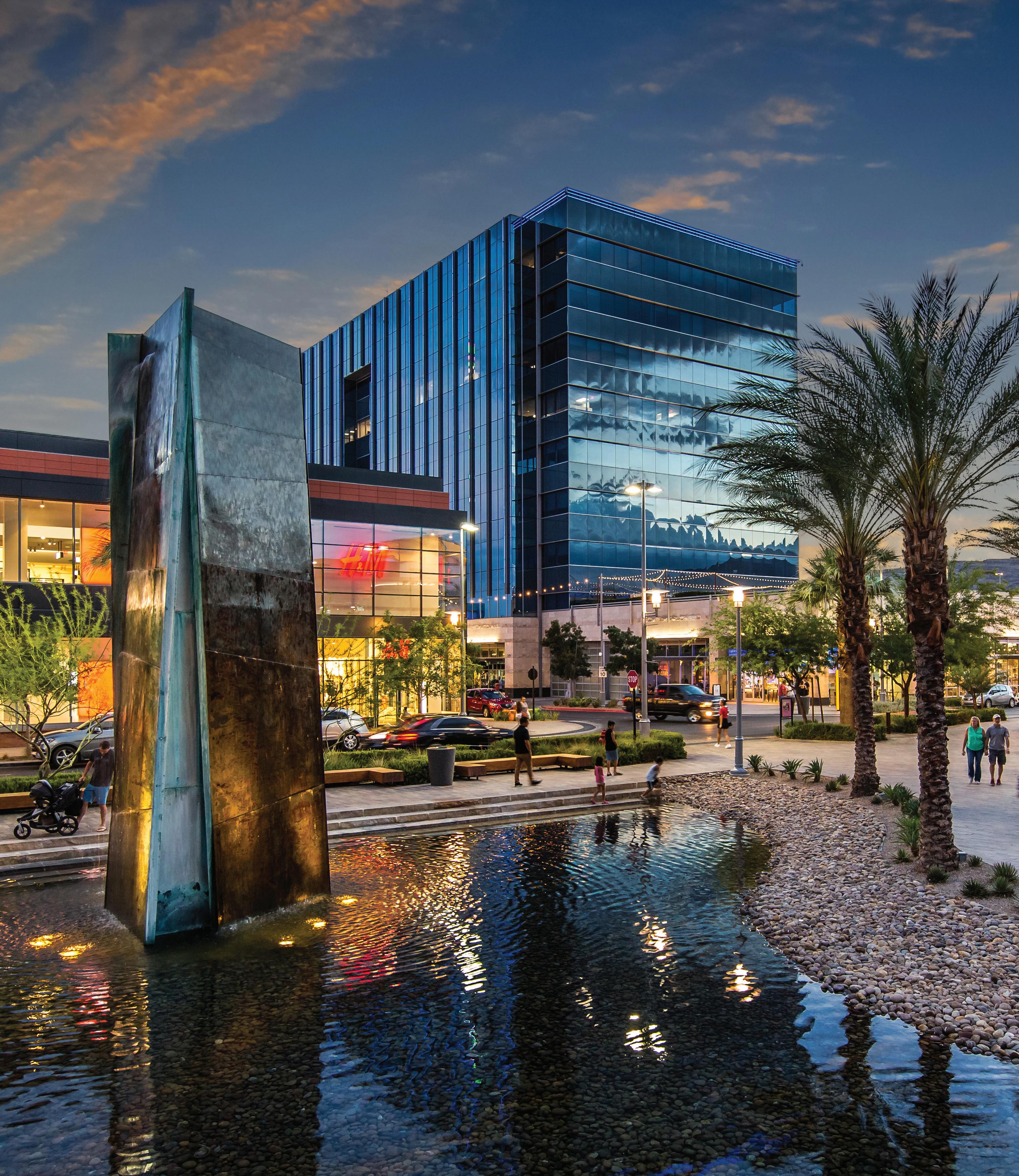ENVIRONMENTAL STEWARDSHIP

RED ROCK CANYON

As the developer of Summerlin®, a master plan community spanning 22,500 acres in Southern Nevada, Howard Hughes Holdings, Inc. has long recognized and honored its obligation as a steward of the land.
Even before the first family moved into the community more than 30 years ago, Howard Hughes Holdings, Inc. demonstrated environmental responsibility in significant ways that charted the course for future and current development.
Today, Summerlin continues its leadership role as the Las Vegas valley’s premier community committed to smart, sustainable and environmentally responsible growth and development.
A National Treasure and Southern Nevada’s Magnificent Landmark
In 1988, three years before the first family moved to Summerlin, Howard Hughes Holdings, Inc. initiated a land exchange with the Bureau of Land Management (BLM), to trade more than 5,000 acres of highly sensitive land for land deemed more appropriate for future development.
This critically acclaimed exchange was facilitated by The Nature Conservancy and created a buffer zone that continues to protect Red Rock Canyon and serves as a gateway into the National Conservation Area.
In 2002, Howard Hughes Holdings, Inc. initiated a second land exchange with the BLM to transfer more than 1,000 acres along Summerlin’s western border into the adjacent Red Rock Canyon National Conservation Area and set aside more than 1,200 acres for a future Clark County Trails park.
A MODEL OF CONSERVATION

WATER CONSERVATION

Summerlin was one of the Las Vegas valley’s earliest adopters of desert landscaping, helping to improve public perception of low water-use landscapes as beautiful, lush and desirable.
In 2003, the community, in partnership with Southern Nevada Water Authority, became the region’s first community to implement strict Water Smart conservation guidelines on a community-wide basis.
Today, Summerlin continues to replace older existing grass landscapes that are deemed non-functional, replacing them with desert-friendly plant materials that save millions of gallons of water each year.
Nearly 80,000 square feet of turf along Summerlin Parkway originally planted in 1990 when there was no drought, have been removed and replaced with low water-use landscaping, saving more than five million gallons of water annually.
Approximately 32,000 square feet of turf was removed from neighborhood entrances in The Paseos village, resulting in significant water savings.
Through the end of 2023, 550,000 square feet of grass has been removed from areas in Summerlin where the grass served only a decorative purpose, saving ~30 million gallons annually.
The Lawn in Downtown Summerlin—one of the destination’s most popular gathering spots for festivals, events, fairs, concerts and more— recently received a make-over in which more than 58,000 square feet of Fescue was replaced with Bermuda grass, a change that will save more than 1.2 million gallons of water annually.
In Summerlin South, “water smart” irrigation controllers that automatically adjust watering schedules and volumes based on current weather conditions, are saving 38 million gallons of water annually.
PRESERVING LAND, WILDLIFE AND HISTORY

TRAILS FOR HEALTH AND CONNECTIVITY

Natural landscapes and topography are integrated into the community wherever possible, including natural drainage areas and arroyos that serve dual use for parks and trails.
For example, in the village of Stonebridge, native vegetation was left intact within an expansive drainage wash that handles a high volume of water from adjacent Red Rock Canyon National Conservation Area during a storm event. Native plants within the wash slow and filter stormwater as it travels downstream, preserving the area’s natural aesthetic by avoiding use of more traditional concrete-lined channels. The wash is fortified with large boulders designed to mitigate erosion and hold in place the integrity of the channel. A hard-packed earthen walking trail planted with native vegetation and drought tolerant landscape runs along one side of the wash, while periodic pedestrian bridges connect both sides of the wash.
The community’s design intent is to minimize the development footprint and create a seamless transition between built and natural environments.
Howard Hughes Holdings, Inc. has long worked with federal and state governments, tribal leaders and the archaeological community to protect historic American Indian rock art etched into the Little Red Rocks in the far western region of Summerlin.
In 1998, Howard Hughes Holdings, Inc. played a leadership role to establish a development fee to fund a Desert Tortoise habitat in Southern Nevada—a widely acclaimed multi-species habitat program.
Summerlin boasts more than 200 miles of trails that connect neighborhoods to schools, parks and the Clark County regional trail system while encouraging a healthy, active, outdoor lifestyle.
In 2008, Howard Hughes Holdings, Inc. received the American Trails Developer Award from American Trails, a nonprofit organization dedicated to trail interests. This was the first time the award was given to a private developer.
LEED SILVER CERTIFICATION

SMART GROWTH –NEW URBANISM

In 2016, Downtown Summerlin’s retail area, One Summerlin office building and Two Summerlin (2018) earned Silver certification status from the U.S. Green Building Council (USGBC) in its Leadership in Energy and Environmental Design (LEED) program.
• Downtown Summerlin North Retail | 2016 LEED Silver-certified
• Downtown Summerlin South Retail | 2016 LEED Silver-certified
• One Summerlin office building | 2016 LEED Silver-certified
• Two Summerlin office building | 2018 LEED Silver-certified
• 1700 Pavilion office building | 2023 LEED Silver-certified
• Tanager Echo | applying to become LEED Silver-certified
• Summerlin South Office building | upon completion, this project will apply to become LEED Silver-certified
Today, Summerlin is creating higher density urban areas in and around Downtown Summerlin, as well as in Summerlin West.
Plans in Downtown Summerlin call for more than 4,000 additional multi-family residences, including apartments, townhomes, and condominiums. The goal is to provide a true pedestrian-friendly, urban-style living experience.
In Summerlin West, homes with smaller footprints are proving equally popular with Millennials and empty-nesters—all seeking a more experiential lifestyle with less maintenance and offering a more sustainable existence.








